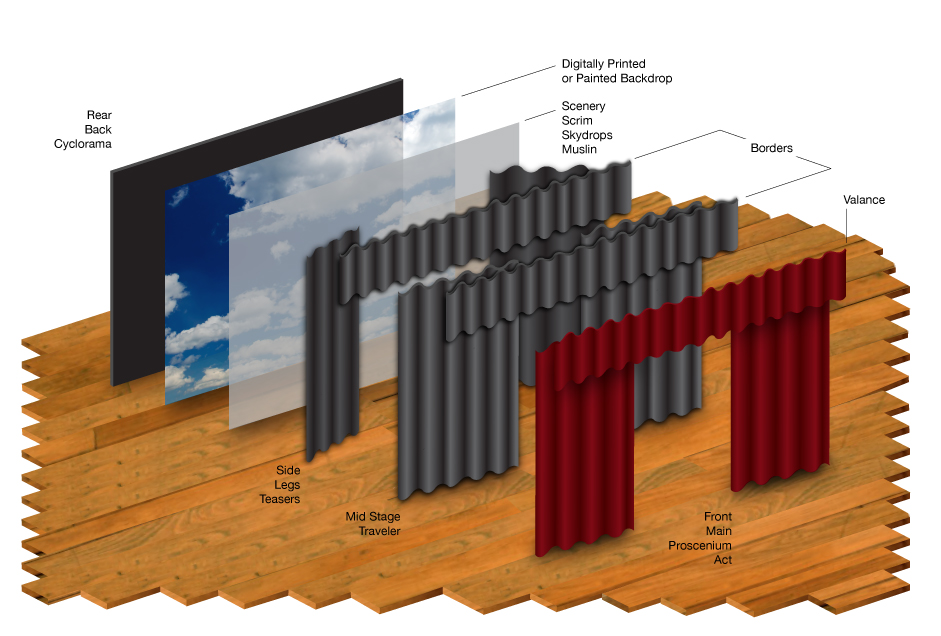
Valance
Hangs in front of the front stage curtain and is made of the same material as the front stage curtain. The valance may have monograms, emblems, and fringe. It may be tied to a pipe or tacked or stapled to the back of the proscenium wall and is sometimes called the front or grande teaser.
Mid Stage Traveler
Some stages have one or more curtains that can be used to make the stage shallower so that an act can be presented in front of the intermediate curtain while scene changing is done behind the curtain. This is sometimes called an opera curtain, olio curtain or mid-curtain.
Front Curtain
The curtain the audience sees when the stage is closed before performances. Sometimes called house curtain, act curtain, main curtain, or grande drape.
Scrim
An open netting type of curtain. When lighted from the front it is opaque. When lighted from the back it is translucent and can be seen through. Good lighting is required to make this special effect work. More on scenery curtain fabrics.
Back and Side Curtains
The name for all the curtains behind the front curtain. Styles vary from simple curtains surrounding the acting area to multiple layers of travelers, legs, borders, and backdrops. More on back and side curtain fabrics
Rear Curtain
The curtain at the back of the stage used to keep the audience from seeing the back wall of the stage.
Borders
These are short stage curtains to block audience view of the stage lighting and rigging. (More on sight lines.) They are sometimes called teasers, sky borders or sky valances and are usually tied to a pipe.
Sky Drop
A blue muslin curtain, usually behind the rear curtain, used to represent sky for outside scenes or through windows. If this backdrop curtain is made of natural colored muslin for painting scenery on, it is called a Scenery Curtain. The Sky Drop is always flat with no pleats.
Legs
Side curtains to block audience view of the sides of the stage. These are installed parallel to the front stage curtain and sometimes include pivots.
